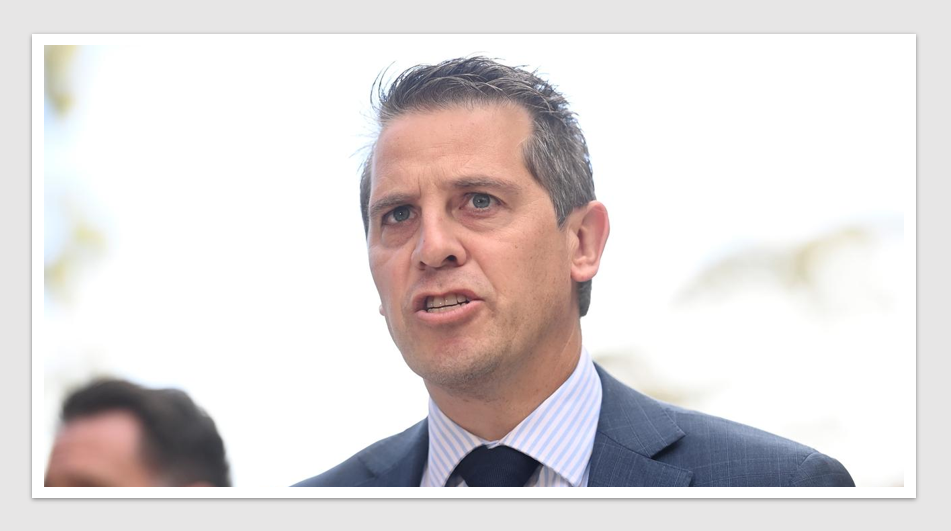News & Trends - MedTech & Diagnostics
Australia lags behind in patient access to TAVI technology for aortic stenosis

MedTech News: Earlier this year, Edwards Lifesciences and Medtronic Australasia submitted applications for the Medicare Benefits Schedule (MBS) listing of transcatheter aortic valve implantation (TAVI) for patients with symptomatic severe aortic stenosis (AS) at low risk for surgery.
A recent whitepaper developed by experts at the Baker Heart and Diabetes Institute showed more than half a million Australians have valvular heart disease, including stenosis and regurgitation.
Prof. Stephen Worthley, Interventional Cardiologist, GenesisCare, spoke with Health Industry Hub about the state of play of TAVI technology, how it has revolutionised the management of aortic valve disease and the urgency of funding TAVI in the low surgical risk patient population subsequent to the positive Medical Services Advisory Committee (MSAC) recommendations.
Health Industry Hub: How has TAVI revolutionised the management of aortic valve disease in Australia?
Prof. Worthley: Australia’s TAVI use started in 2008 in a trial format. We have seen it emerge to become a standard of care for high-risk patients who have severe aortic stenosis. There is a large burden of this disease in our society because it is predominantly a condition of age.
Thinking back to 15 years ago, the only treatment strategy we had for patients with aortic stenosis was surgery or nothing. Medications do not work to help the condition because it is a physical obstruction to the blood flow.
In the last four or five years as access has improved TAVI has become a clinical standard of care in the public and the private system for that higher risk group.
The caveat I would add is that Australia has lagged behind many Western countries in the access to minimally invasive procedures versus the open surgical procedure. For example, we lag behind the US, Germany and Japan which often is late on regulatory approval for new medical devices.
We have seen this divide in Australia where we are used to being an important player in early device and pharma research and early innovation, yet we have seen this chasm emerge over the last 10 years or so where Australia is one of the last to find a standard clinical pathway for reimbursement and use in clinical practice.
Health Industry Hub: What are the main barriers to providing timely access to innovative medical technologies in Australia?
Prof. Worthley: From a practical perspective, we have a disconnect between the regulatory approval process by the TGA and reimbursement.
This may be similar in other societies however there seems to be a timelier process in the US or many of the Western European countries between the two regulatory bodies than there is in Australia.
There is also the conversation on funding in the public and private sector once the reimbursement recommendations have been put forward.
We need to be good custodians of spending healthcare however it feels like we have this quite slow, inefficient process.
Why have we not therefore sped the process up? One factor could be that we have had some bad news stories around medical device prostheses in years gone by within joint and breast implants. There needs to be very rigorous checks and balances on medical devices. Has some of the fear around that led to inordinate delays where we are now the laggards compared to others in Western society? Is there also the fear that by providing reimbursement in a timelier fashion that we are going to find blowouts in the budgetary expenditure?
My view is that a greater engagement by the healthcare providers with the bureaucrats that are involved in the processes is required so that we can collectively and more harmoniously find a way through and that there is, on both sides of the ledger, some improvement and an increased onus on the healthcare providers around fiscal management.
Health Industry Hub: In July, MSAC recommended the MBS funding of TAVI for patients with symptomatic severe aortic stenosis (AS) at low surgical risk. How has the clinical data progressed in this patient group to demonstrate improved outcomes?
Prof. Worthley: In 2019 two very important papers were published with trials that enrolled around 1,000 patients. [ref 1, ref 2]
Intrinsically these patients are younger and have less comorbidities, and traditionally would have to undergo an open-heart operation.
The data showed that compared to surgery the less invasive Transcatheter aortic valve replacement (TAVR) procedure was associated with lower morbidity leading to less bleeding, shorter hospital stays, and significantly less stroke at 30 days by a factor of about three to four.
Interestingly, patients tell us that they are less worried about dying than having a stroke. Stroke is very emotive and debilitating.
Those studies have facilitated the TAVI reimbursement in this patient group and therefore clinical practice in the US, Western Europe and Japan.
This in turn led to updates in clinical guidelines which support both options [TAVR and open-heart surgery] as reasonable choices for the low-risk patient group which is facilitated by the multi-disciplinary team – surgeons and interventionists – helping patients make the right choice.
In Australia, although TGA approved, neither the private or public sector provide access to TAVI as a choice for low risk patients unless they are prepared to pay out of their own pocket.
The quality-of-life index, which is becoming increasingly more important to clinicians, in these trials is superior for the TAVR procedure versus surgery at 12 and 24 months.
Health Industry Hub: How important is the timely funding of TAVI to allow access to the low surgical risk group of AS patients?
Prof. Worthley: Australia has great healthcare and it is a great place to live. We have great quality of life and yet we are behind on these key standards in healthcare. In my view it [funding] needs to start now.
If I’m a patient and have been paying my health insurance for many years and I have this condition I deserve the opportunity to make the choice and not come down to me having to pay $70,000 or $80,000 extra where the evidence clearly shows that it [the TAVR procedure] is beneficial.
We all understand that healthcare is becoming more costly especially as new technologies come in so finding a way to manage that is key.
Germany is an interesting example. The country has an innovative fund program where they fund early medical technology that has supporting clinical data, with finite resource allocation, and create data registries so that they can collect real world evidence and assess how the technology is performing in their country. TAVI has been an example where they created that model and found that in fact it was a great therapy for patients with lower risk. Subsequently they have allowed its access to blossom.
In Australia, the time is now [for TAVI funding in low surgical risk] and any delay for me is an added delay to what we have already found.
News & Trends - Pharmaceuticals

Call for coordinated policy and cross jurisdiction funding in chronic disease
Pharma News: The life expectancy of Australians is still rising, however the increased prevalence of chronic conditions and co- and […]
MoreNews & Trends - MedTech & Diagnostics

Expansion of hospital services for patients in NSW Macarthur region
MedTech & Diagnostics News: Marking a historic milestone with NSW Deputy Premier Prue Car and Health Minister Ryan Park, Campbelltown […]
MoreNews & Trends - MedTech & Diagnostics

Pathology reforms: Frozen fees, windfall gains, and the fight for bulk-billing
Diagnostics & MedTech News: For nearly a quarter-century, pathology fees have remained stagnant – a situation deemed patently unfair by […]
MoreNews & Trends - Biotechnology

Superiority of cell-based flu vaccine revealed in RWE study
Biotech News: Vaccines stand as the primary strategy to mitigate the considerable morbidity, mortality, and economic burden associated with influenza. […]
More